Workplace Recycling Beyond the Blue Bin
MAKING RECYCLING COUNT BEYOND THE BIN
Americans recycle that amount of waste every year, which is actually really great. However, while some people think that whatever is put in the blue bin gets sorted at the facility and is quickly transformed into a renewed, eco-friendly product, the process is a little more complicated. Recycling in reality, is a business, but in order for our recyclables to be fully utilized, someone has to buy them first.
The issue is, this strategy is no longer working.
For decades, the US sent thousands of ships filled with our recyclables to China each day. The growing country had a need for cheap materials to support its burgeoning industries. In 2019, with its “National Sword” policy, China announced that it no longer wanted to import “foreign garbage”and decided to tighten contamination standards and stop taking 24 types of materials such as post-consumer plastic and mixed paper entirely.
In order to export our recycling to China, the individual materials must have a contamination rate of less than 1%. To put that number into perspective, the contamination rate at most facilities in the US hovers around 25%.
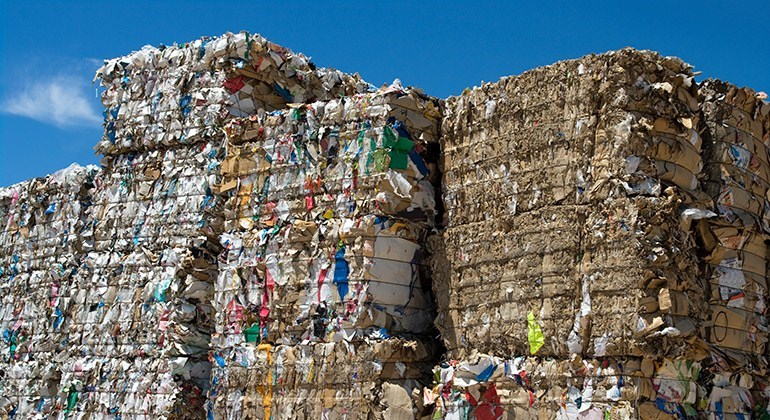
credit: xray-delta.com
We need to get better at recycling to fix this crisis.
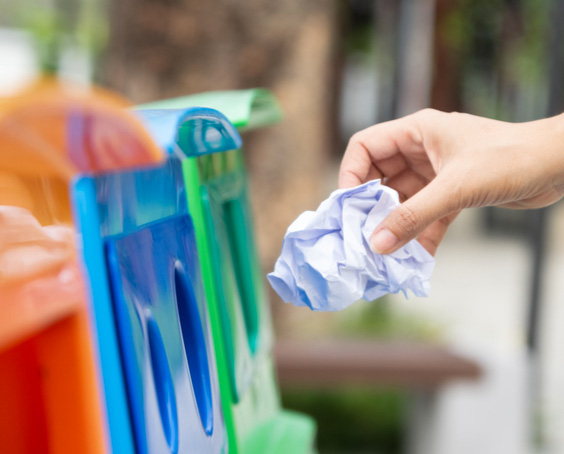
Before You Even Start: Ask Yourself, Could I Reuse This?
The number one priority: Reduce your waste. Reducing your waste starts with taking a good look at your everyday lifestyle and habits to figure out how you can develop new, less wasteful routines. For example, borrow products you use only rarely, like a cupcake tray, or even a vehicle. Also start cutting out single-use plastic water bottles and drink tap water. That will make a difference as well as continuously having a reusable bag to avoid plastic.
Then, train your mind to think of ways to reuse an item before it reaches the trash. This is the time to get creative. Use pasta sauce jars as reusable grain containers, wine bottles as vases and even old t-shirts as rags. Upcycle old furniture or donate it.
Rule #1 | Avoid Being An Aspirational Recycler
The overall problem with contaminated recyclables in the US stems from the country’s movement toward single-stream recycling, which is when we throw any type of item in the blue bin, leaving the sorting up to the facility. Another part of it is something we’re probably all a little guilty of: aspirational recycling.
Aspirational recycling is essentially thinking something should be recyclable, and then gets thrown away in the bin. Empty yogurt container? Pizza box? Both can be recycled! Wrong. Even if you have the right idea, putting these objects in with the rest of your recycling does more harm than good. Yogurt containers are the wrong kind of plastic, and pizza boxes are ruined by grease. They can contaminate your whole bin, which means it is sometimes all sent to the landfill.
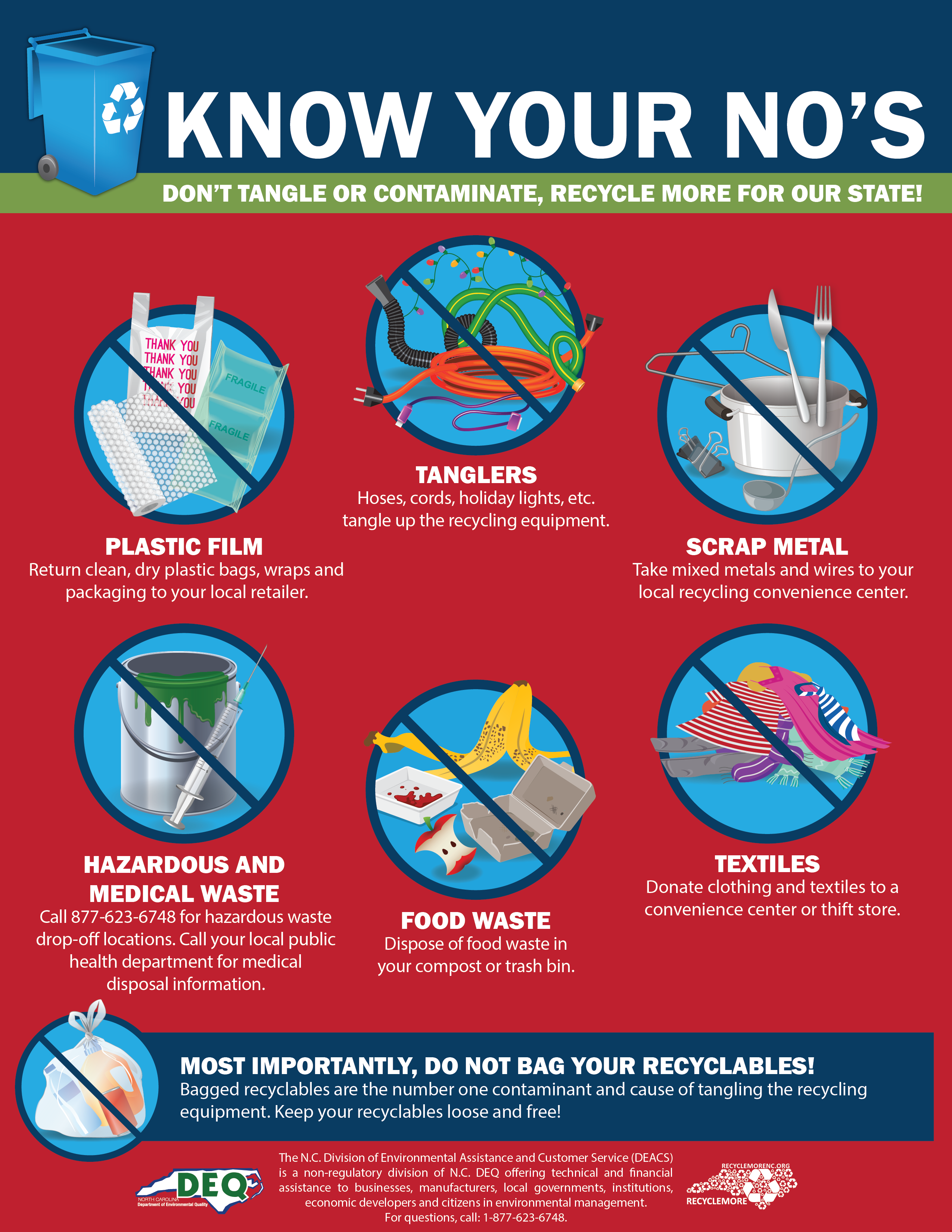
Rule #2 | Understand What You Are Putting in Your Recycling Bin
Get to know your city’s recycling rules. Understand what they do/ do not accept as recyclables and whether they single or multiple-stream. Most of your answers can be found on your municipality’s website.
- PLASTICS are not all recyclable. Throw away your straws, coffee cups, and bubble wrap. These will just wreak havoc at the recycling facility. Soft plastics, like plastic bags, can be recycled, but not at traditional facilities. You’ll need to locate a place that will accept them. Many grocery stores have a carrier bag collection point, and some of them even accept bread bags, bubble wrap, and breakfast cereal liners.
- PAPER AND CARDBOARD can be recycled as long as it’s not contaminated by food, liquid or waste. Break down your cardboard boxes and remove bubble wrap or plastic windows from your paper.
- METALS AND ALUMINUM can be recycled indefinitely. Remove the labels and make sure it’s not caked with food. If your metal can has an insulated coating, throw it out.
- GLASS is recyclable in every color and form. It does not degrade in the process, and can be recycled again and again and again.
Rule #3 | Clean & Rinse Out Items
Packaging with too much food residue will immediately be rejected due to contamination. Additionally, neglecting to clean up your recycling just leads to more contamination, leading to more recyclables ending up in the landfill.
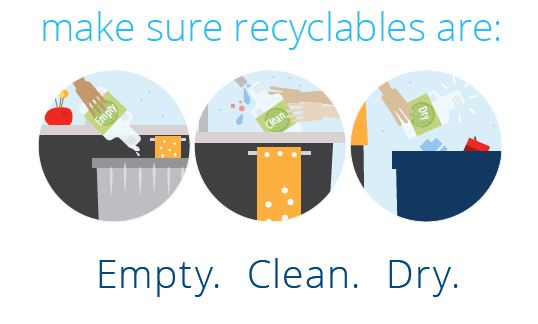
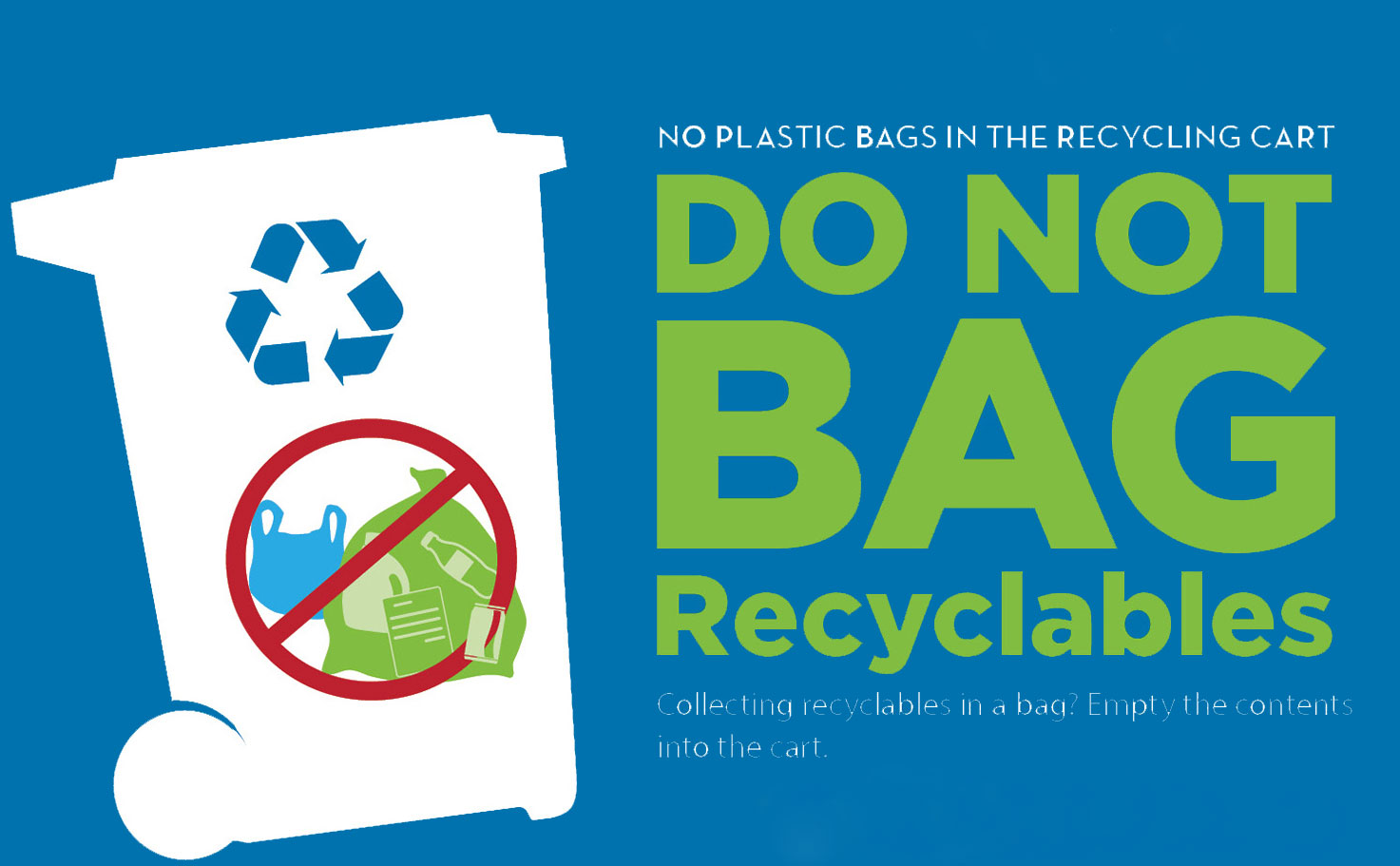
photo by: mwcog.org
Rule #4 | Bagging Is Not the Way to Recycle
Many people assume that we should bag our recyclables, just like we bag our garbage. However, that is not the case and they should all be placed in your bin individually. Plastic bags get caught in the recycling facility’s machinery and delay the entire process. When they’re bundled, recyclables cannot be sorted at the facility, therefore are sent to the landfill.
Rule #5 | Purchase Recycled Products When Able
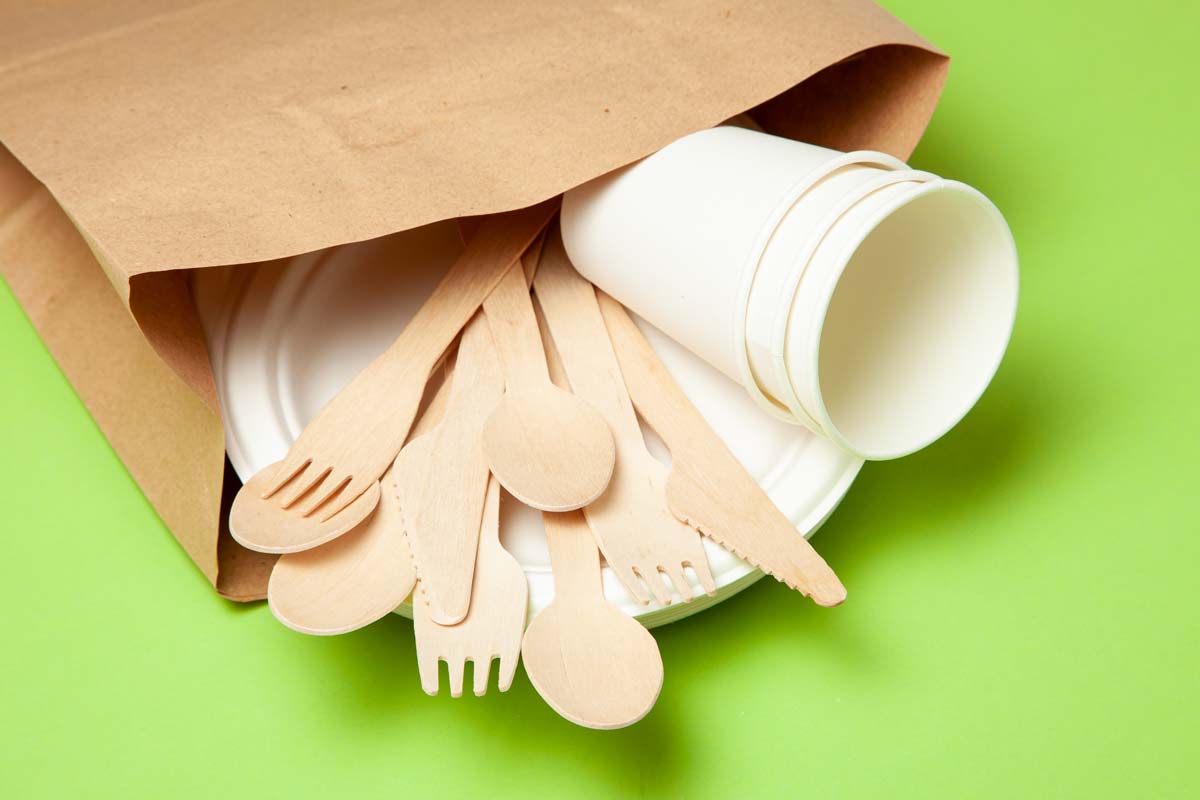
Even if you always recycle the plastic you buy, you are still fueling the market for it by purchasing that plastic in the first place. Companies are ramping up the production of brand new products in order to feed our insatiable appetite for them. We can curb this trend by being intentional about purchasing products that are made from, or partly made from recycled plastic. This is getting easier to find as businesses realize it’s a priority for customers.
Essentially, be mindful of what you recycle and how you recycle moving forward and that will make a huge difference in our environment.
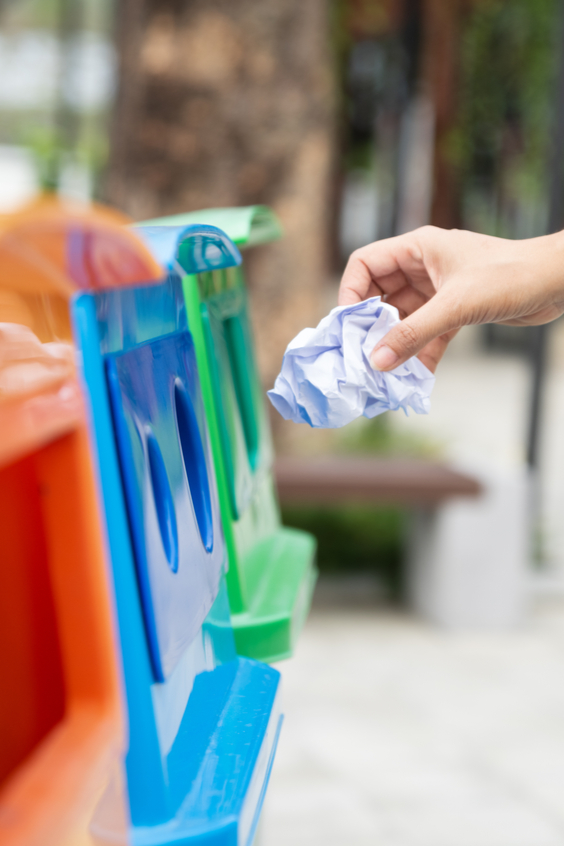
credit: Pinterest
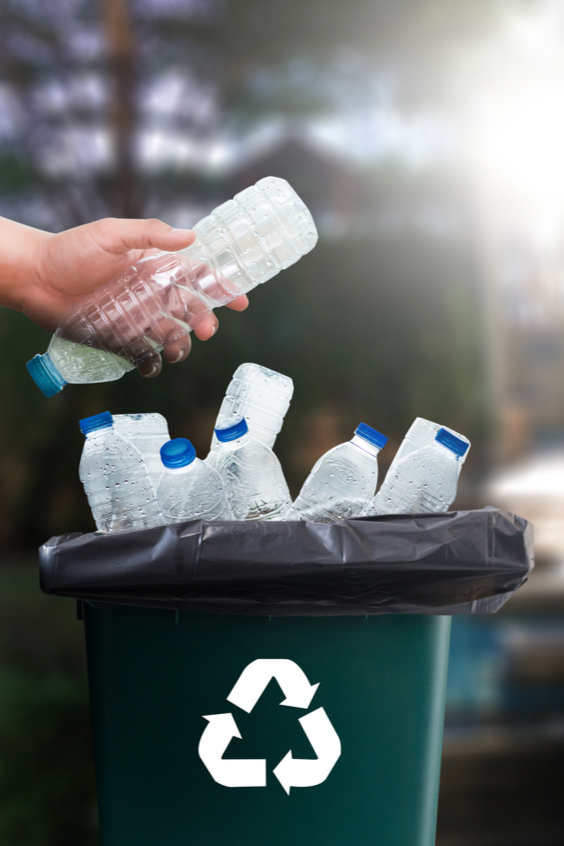
credit: Pinterest
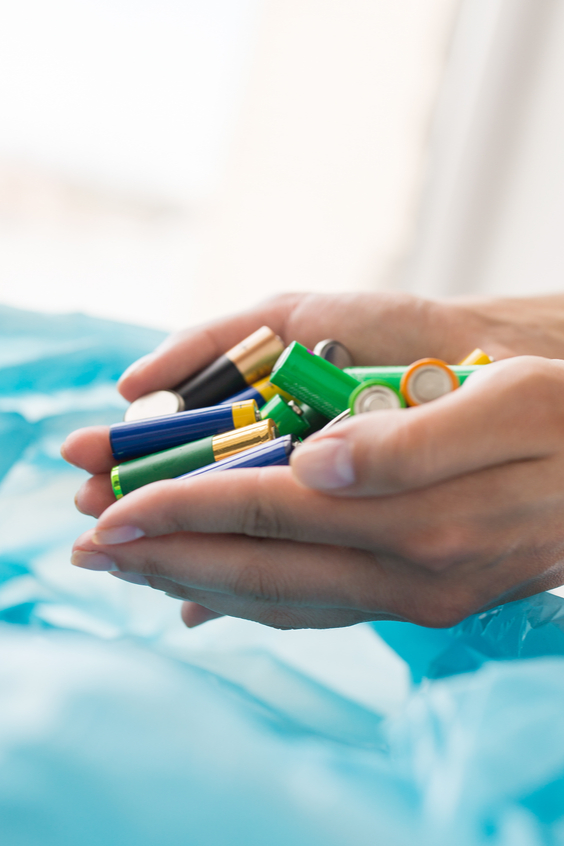
credit: Pinterest
ABOUT US
At InteriorLOGIC, we build work environments. From our home office in Madison, WI our award-winning commercial interior design team focuses on creating spaces that work. We continually work to improve the end user experience with each design and our team is well-suited for challenging projects including LEED certification and sustainability projects. For more information about our business and approach, please visit www.intlogic.com.



